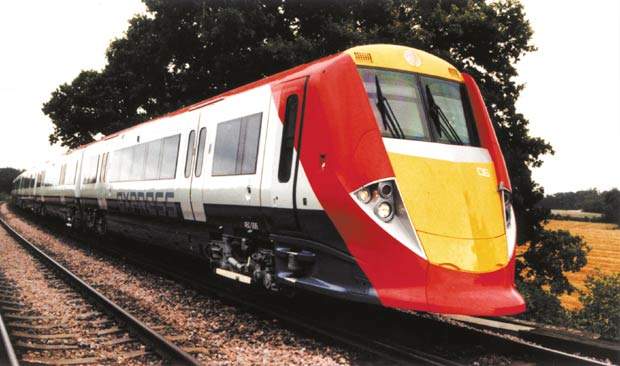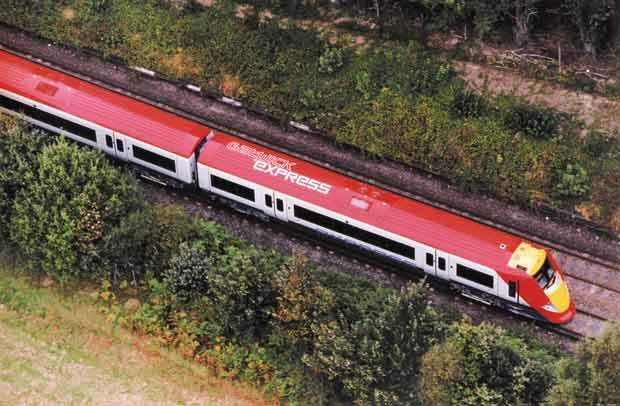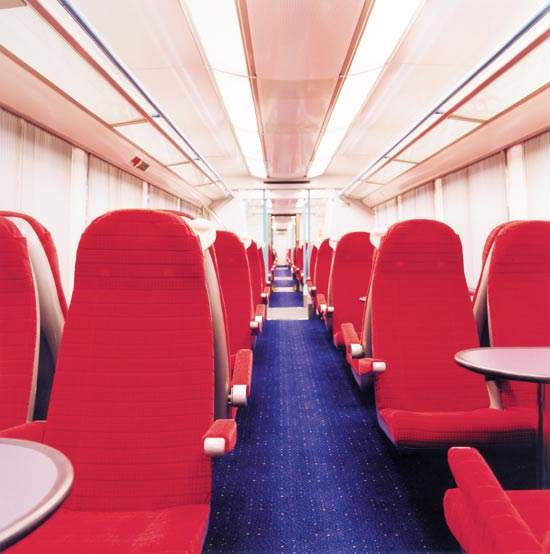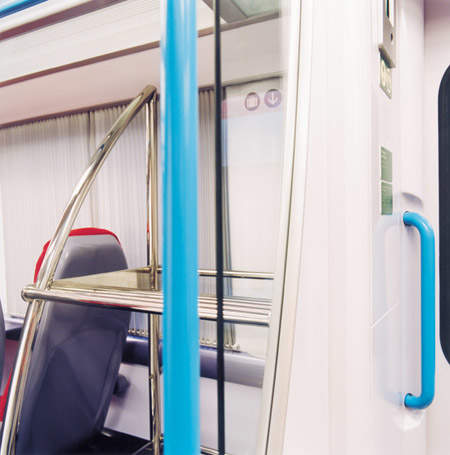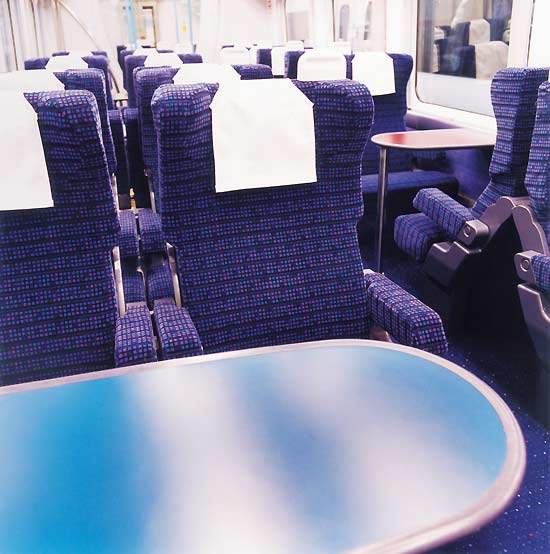Gatwick Express, the first dedicated city centre to airport rail link in the UK, has undergone a major service transformation with the introduction of a fleet of brand new trains at the end of 2000. However, February 2006 saw the UK Government announce its likely demise because it is using up valuable line capacity.
Trains have operated directly to the airport since its opening in 1959, with dedicated rolling stock provided in May 1984. On privatisation, bus and rail operator National Express was awarded a 15-year franchise for Gatwick Express from April 1996, on condition that it invested in new trains. The entry into service of eight five-car electric multiple units was however delayed by almost two years because of a long, drawn-out testing procedure.
Gatwick was once considered London’s ‘second’ airport, but steady growth has put it almost on a par with Heathrow, and given it a substantial lead in the fast-growing charter market.
A 15-minute interval service operates over the 26.75-mile (43km) route. Gatwick Express carries four-fifths of all rail passengers to the airport, exploiting its advantage of offering the fastest journey time from the airport to central London.
With capacity on the London to Brighton line at a premium, the Department for Transport wants to extend services beyond Gatwick Airport to the south coast of England. Such a move would provide more seating capacity at peak times, but service frequency may have to be reduced to compensate.
The project
On winning the Gatwick Express franchise, National Express pledged to undertake a complete rebranding of the railway. Services run to a regular clock-face departure pattern.
It is one of the few rail franchises in the UK to have been profitable until the 11 September 2001 terrorist bombings in New York devastated Trans-Atlantic business. National Express has been told however that it to pay the British government up to £26 million per year by 2010-11.
Rolling stock
The original trains were ‘secondhand’ air-conditioned passenger coaches powered by a small fleet of Class 73 electro-diesel locomotives, dating from 1962. The locomotives’ age led to serious early reliability problems, which an intensified maintenance regime only partly cured.
The trains, designated Class 460, were built at Alstom’s factory in Birmingham, UK. They comprise eight vehicles, five with powered axles, have a 160km/h (100 mph) top speed, and carry 366 passengers.
The leading vehicle of each unit is largely luggage space, which can be carried in standard airline containers, but also with racks for bicycles and skis. Two luggage stacks are provided next to the door vestibule in each passenger vehicle, in addition to storage space between seats and on overhead racks.
Despite the new rolling stock’s striking appearance, reliability was poor, particularly shortly after its introduction. Braking systems, software and air-conditioning all proved problematic at times. An extensive programme of modifications by the builder has seen this improve significantly, allowing the last of the older trains to be withdrawn in 2005.
Infrastructure
Gatwick Express runs over lines largely dating from the 19th century. Its route includes Clapham Junction, Britain’s busiest railway station, and it shares the route with suburban, inter-urban and inter-city passenger trains.
Gatwick Airport station is considered so important that it is one of only 17 stations out of a national network total of over 2,500 to be managed directly by its owner, Network Rail. It has six platforms and its annual patronage of 11 million also includes passengers from the South Central operating company’s London-Brighton route.
The route is electrified at 750V DC, with power from a third conductor rail.
The new trains are maintained at Stewarts Lane depot, near Battersea in south London. These facilities are shared with other operators.
Signalling and communications
Because of the intensive service operated, trains largely keep to well-defined paths and a regular clock-face departure pattern.
For many years, the service has run under four-aspect colour light signalling, and uses the automatic warning system (AWS), operated by magnets placed at regular intervals between the rails, which triggers a warning bell or siren in the driver’s cab. The driver has three seconds to cancel this warning, or the train’s brakes are automatically applied.
However, the new trains are fitted with the train protection and warning system (TPWS), in line with recommendations following the 1998 crash at Ladbroke Grove, London. They were the first new fleet of trains to be so fitted, though all trains running on the main UK network now have this system.
The future
An Airport Express alliance has been formed with the neighbouring Heathrow Express and Stansted Express businesses to share knowledge and stimulate future business.
The 10% fall in business in the aftermath the 11 September 2001 terrorist attack on New York forced a curtailment of overnight services, which it is hoped to resume when market conditions permit. Profits are being maintained by careful cost cutting.
With a turnover of around £40 million, revitalising passenger numbers is critical if Gatwick Express is to make a consistent profit. However, the premium payments profile could change radically should the Strategic Rail Authority prove successful in its bid to extend services from Gatwick Airport down to the south coast.

